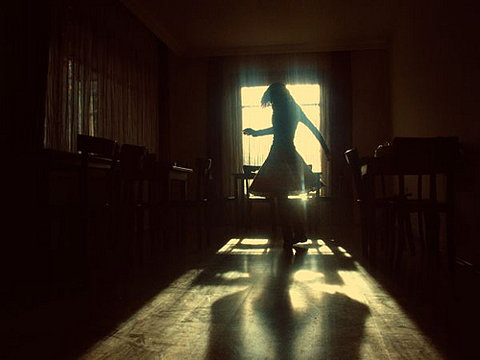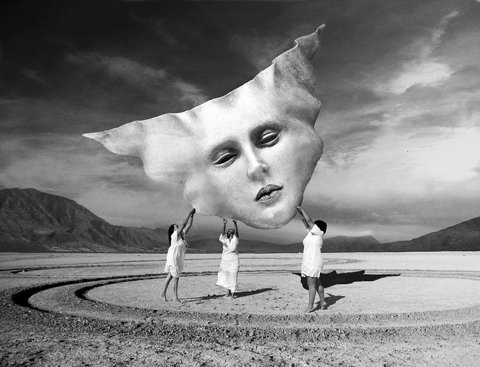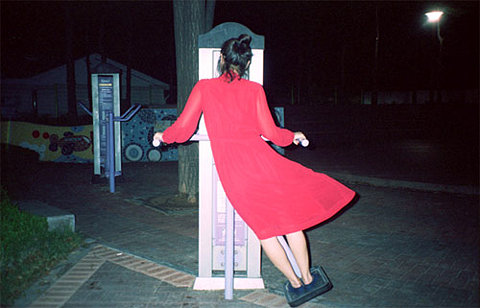Question
The Buddha lived 500 years before the common era. A very humble man, a person with very few possessions. What did he accumulate in his life? A couple of robes, a bowl. Over the years people would come to be around him, or to practice with him, and some of them stayed, and a group formed of people who wanted to live together in a new way. What was that new way?
The Buddha, in those days, was absorbed by a very pressing, a very urgent question. What needs to be done now? It was a very helpful question. What needs to be done now? And it helped him to see through the rigid caste society of India, which assigned people to a particular class or caste at birth. But in this group, this sangha, there were no castes, and no classes. Because the answer to this question: what needs to be done now? Was to say yes to each person as they presented themselves… what does it matter if they were very born poor? Or if they were heartbroken? Or if they were depressed? Of if they were a woman? Or a man? Or someone who was in between a woman and a man. What did it matter what religion they observed? What needs to be done now means saying yes, please come in and join us. What can we do for you?
There were deep cultural grooves at that time, just like our time, that insisted this is an important person, and this is a not important person. The Buddha uses his questions in order to see clearly, in order to practice appropriate seeing. The Buddha’s practice is a practice of questioning, and using questions he is able to see through the grooves, the deep grooves of his culture. He invites us, I think, to reexamine the deep grooves of our family that can operate with such certainty, that can lock us into a fixed place, a fixed position. Mother, father, daughter, duty, obligation. how can we answer the question: what needs to be done now – if we are frozen in a fixed place?
Getting Along
Over the next few months we’re going to look at a series of five ethical precepts, ethical principles, that are laid out in Patanjali’s Yoga Sutra, and they sing with the precepts that the Buddha offered to the group that was gathering because this group was committed to the most difficult practice of all practices. More difficult than sitting in solitary meditation for months at a time. More difficult than becoming the answer to every koan in the koan curriculum. Their practice was: getting along with each other. I don’t know about you, but for me, I seem to be wanting to express my opinions. I want to declare my beliefs about… something or other, I want to live inside my ideas because my ideas protect me from feeling anything. And what I use many of my ideas for is to form clubs of people that have the same ideas, and I huddle together with them and ensure that people who don’t share our idea mirror – well, they should be tossed out, ejected, (what kind of yoga do they do? what kind of Buddhism do they believe in? what kind of books do they read? who do they vote for? – throw them away. How do we get along? How do we get along, not with our similarities, but how do we hold a space for our differences?
The first precept we’re going to look at is non-harming, or non-violence. I wonder if we could rewrite this precept as a question. instead of asking: how can I practice non harming, perhaps we could ask: how can we get along?
Now in Buddhist psychology, in Buddhist practice, it is most common to begin with the self. If you want to extend loving kindness to someone, the traditional practice is to find loving kindness in yourself, even if it’s only a small amount. Oh look look there it is, at the tip of my baby finger, loving kindness. Once you find loving kindness in yourself, then you can extend it to others. So I wondered if we could return our new and old question back to ourselves. How do we get along, with ourselves? How do we reject, or throw away parts of ourselves? How do we cause harm to ourselves? Because if we could stop causing harm to ourselves, then perhaps we could stop causing harm to others.
Jesus
I’d like to begin by conjuring an unlikely couple: the French postmodern psychoanalyst Jacques Lacan and Jesus. Jesus said, “Love thy neighbor, as thyself.” Lacan asks: now why would he say that? I mean, everybody knows that we all hate ourselves. Why would we want to inflict that on our neighbours? Adam Phillips, the celebrated British shrink and aphorism machine, goes on to make an invitation, and I would like to extend that invitation to you. Adam Phillips invites us to hear again our most familiar voice, you know the one that is forever telling us that we’re not beautiful enough, or smart enough, or certain enough, or strong enough. Can you hear that voice? OK, OK, now imagine that this voice, your voice, is living in a body. This voice of your not-enoughness has a body, and imagine you walk into a party, you stride into the room, and there they are. Hovering around the drinks table. Why don’t you say hello to your inner critic. Hi, inner critic.
Let’s do a quick partner exercise. Just turn to the person next to you, and we’ll do a short meditation of one minute, and one of you will see your inner critic. And when the bell rings signaling that the minute is over, you’ll open your eyes, and the other person will ask, “What does your inner critic look like?” Let’s say that altogether once. What does your inner critic look like? Now please answer the question with your partner, and tell her or him what your conversation is like, or what you do with each other. You’re at a party, you meet your inner critic. What do they look like, and what do you say to each other? (5X2)
So tell me, what are they like? Are there many people around them, are they the centre of attention, an irresistible attraction? (discussion)
Fear
The inner critic is always so certain, aren’t they? They always know the answer. Because no matter what the situation is, they’re always prepared to say: no, that’s not good enough. And what could we say about a person who is forever rushing to judgment, who wants to tell you what they think before the event, the meeting, has even happened? Isn’t this a person, or a part of ourselves, that is filled with fear? Isn’t the self critic born out of that place in our body that is most afraid?
Tell me, when you’re afraid are you a large person or a small person? Does fear make you bigger, the way cats turn sideways so they appear wide and large and threatening? Or does fear make you feel smaller? Why don’t we take a moment and think of a moment in our life when we were afraid, and we’re going to stay in touch with our perimeter, our outline, the gaze is very wide, as wide as you can make it, and the invitation is to step back into the place where you felt fear, and observe, with curiosity, what happens in the body.
The inner critic lives in the part of our body that is filled with fear, that makes us feel small. And out of this smallness it sings the same song over and over again. Does it seem strange that we should identify so strongly with this person? That we should believe that here at last is the truth, the real truth, about who we really are. Even though they keep saying the same thing, the worst thing, over and over again?
Inner Critic
I wanted to ask this question: Who would want to spend any time at all with this sad and angry person? Only I think the answer is obvious. Just about everyone. Just about everyone would like to dedicate their life to this sad and angry and small version of themselves.
Adam Phillips: “Were we to meet this figure socially, as it were, this accusatory character, this internal critic, we would think there was something wrong with him. He would just be boring and cruel. We might think that something terrible had happened to him. That he was living in the aftermath, in the fallout of some catastrophe. And we would be right.”
Can someone tell me, what is the catastrophe? If the inner critic is living in the aftermath, is somehow the result, of a catastrophe, what is that catastrophe? What is it that we keep dragging into the room with us?
Adam Phillips: “We are continually, if unconsciously, mutilating and deforming our own character. Indeed, so unrelenting is this internal violence that we have no idea what we are like without it. We know virtually nothing about ourselves because we judge ourselves before we have a chance to see ourselves (as though in panic).”
One thing is for sure, it’s very difficult to put this central question of the dharma, to your inner critic. Who I guess is now the outer critic. What is to be done now? Now. In this moment. In this instant. Because the inner critic is never here, are they? We keep dragging them forward, we keep hauling the certainty of the past into this room, as if we wouldn’t know how to see, how to feel, without all of our familiar emotional furniture around us.
I don’t know about you, but I like to build a special place, right here, in the centre of the room, where I install my inner critic on a throne. And of course they’re so big and perfect, and I’m so small and nothing, that all I can do is say I’m sorry. I’m sorry. I’m sorry. What is to be done now? I don’t know, I’m too busy being sorry. I’m already apologizing for the wrongs that I’m sure I’ll be committing soon.
Risk and Security
So then I wondered, what if I could approach this critic in a different way? What if there was something else I could do with him, with this voice, with this feeling of not-enoughness. As usual I am caught in the old childhood couple, perhaps we could call it, our first parents: I’m speaking of course about risk and security. How secure can I be, how much can I risk? How to find the middle path between risk and security? What is to be done now?
Philips: “The overprotected child is always wondering what must be out there that he needs so much protection from; the underprotected child is always wondering, to begin with, where his parents are, and then where he is himself in all this armour he has had to put on.” (Going Sane by Adam Philips)
The overprotected child learns that the world is terrifying, they can be paralyzed in the small place they live in, or seek out limited contact. What all that security is giving them, is a steady dose of fear. Don’t ever leave me, don’t ever go.
The underprotected child, the child who wanders without supervision, is able to take risks, but at the risk of losing themselves. Who are my parents? And if I can’t know who my parents are, then how can I know who I am?
The practice of non-harming might have something to do with making an approach to your critic, to the part of you that is steadily eroding your confidence, that is amplifying your inabilities. Usually I like to get down on my knees and say yes master, of course you’re right again master, because I long for security. You see, even though these negative words make me feel bad, they make me feel bad in a way that I know and understand. They’re the old words, they’re familiar to me, so I feel safe. I feel safe in that old self whipping.
How to make another kind of approach, how to rejig the relationship?
I think the task for me, as an overprotected child, I need to find a way to survive taking a risk. To risk saying it out loud, expressing my needs, to risk getting angry, to risk failing, to show my incompleteness, to risk saying hello, to risk even allowing someone to touch me. To risk being hurt by someone other than myself. This might have something to do with fear. With the small place in our body that we explored earlier. Perhaps we could touch this small place, reassure this small place in ourselves, grant it some attention, for a moment, before stepping off the edge, taking the leap of faith, actually saying out loud: this is what I need. And knowing what you need because you can feel that too in your body. In your body-mind.
Perhaps the question of non-harming, and the question of how we live with fear, cannot be separated. Perhaps the question of the dharma, which is the question of this moment: – what is to be done now? – cannot be fully felt, cannot be fully realized – this is the word Dogen used last week in the Genjo Koan – to realize the path, to realize the dharma – perhaps the question of this moment cannot be realized without striking up a new relationship with our fear, instead of, for instance, wrapping it around me, or seeing through it like a veil.
The other side of this, once we’ve looked after our fear, is about how we receive care. How do we receive the attentions of another person? How can we open a place in our body when someone says: thank you. “Oh that was nothing, oh anything I did or said that doesn’t mean anything. You did it all yourself.” No no, I just wanted to say: thank you. Thank You. You. How can we give something to our fear, and to take, to receive, the kindness of others? I think it has something to do with identification, with empathy. What is identification? (discuss) It means I jump into someone else’s body. It means their pain is my pain. Many of us find it easy to identify with someone else when they’re in pain. But can you identify with them, when they’re saying thanks to you? Can you feel the way the good in your, your essential goodness, this is the teaching of the Buddha, that each of us has an essential goodness, can you feel the way that that lives in other people? They’re showing you all the time.
Could we leave the security of the old fears, and take the risk of letting someone tell us that we’re ok, that we might even be… lovable?
At every moment, every moment, a new Buddha. And this Buddha is not part of a culture where we compete, or listen to the old voices of the old gods, the gods of not enoughness, but a new culture, a culture of non-harming, where the sacrament is saying: thanks a lot. Thank you. Where the sacrament is receiving this: thank you. To let “thank you” live inside your body. Where are you going to put it.
And could we imagine this culture of giving and receiving praise, or giving and receiving kindness, as part of a practice of non-harming?
Love After Love
I was hoping you could join me in chanting one of my favourite poems. It was written by Derek Walcott. He wrote his first poem when he was 14, but didn’t win the Nobel Prize for poetry until he was 62. He was born on Saint Lucia, an island that had been taken over by the British, which was the reason he spoke English, and all his friends spoke English. In fact, it’s the reason we’re speaking English here, in this room. We are speaking the language of the winners, the colonizers, the language of the dominant culture, and inside this language are values, hierarchies of what is good and virturous and true, and what is ugly and unwanted. So often, people in island nations learn to speak a language that excludes them, that refuses them, that puts the English person at the centre of the room, and the other people at the edges of the room. So Derek Wolcott breathed into his conditions, and he wrote this beautiful poem. It is a poem of non-harming, a celebration of non-violence. An anti-colonial poem from the islands.
Love After Love by Derek Walcott
The time will come
when, with elation
you will greet yourself arriving
at your own door,
in your own mirror
and each will smile at the other’s welcome,
and say, sit here. Eat.
You will love again the stranger who was your self.
Give wine. Give bread.
Give back your heart to itself,
to the stranger who has loved you
all your life,
whom you ignored for another,
who knows you by heart.
Take down the love letters from the bookshelf,
the photographs, the desperate notes,
Peel your own image from the mirror.
Sit. Feast on your life.




